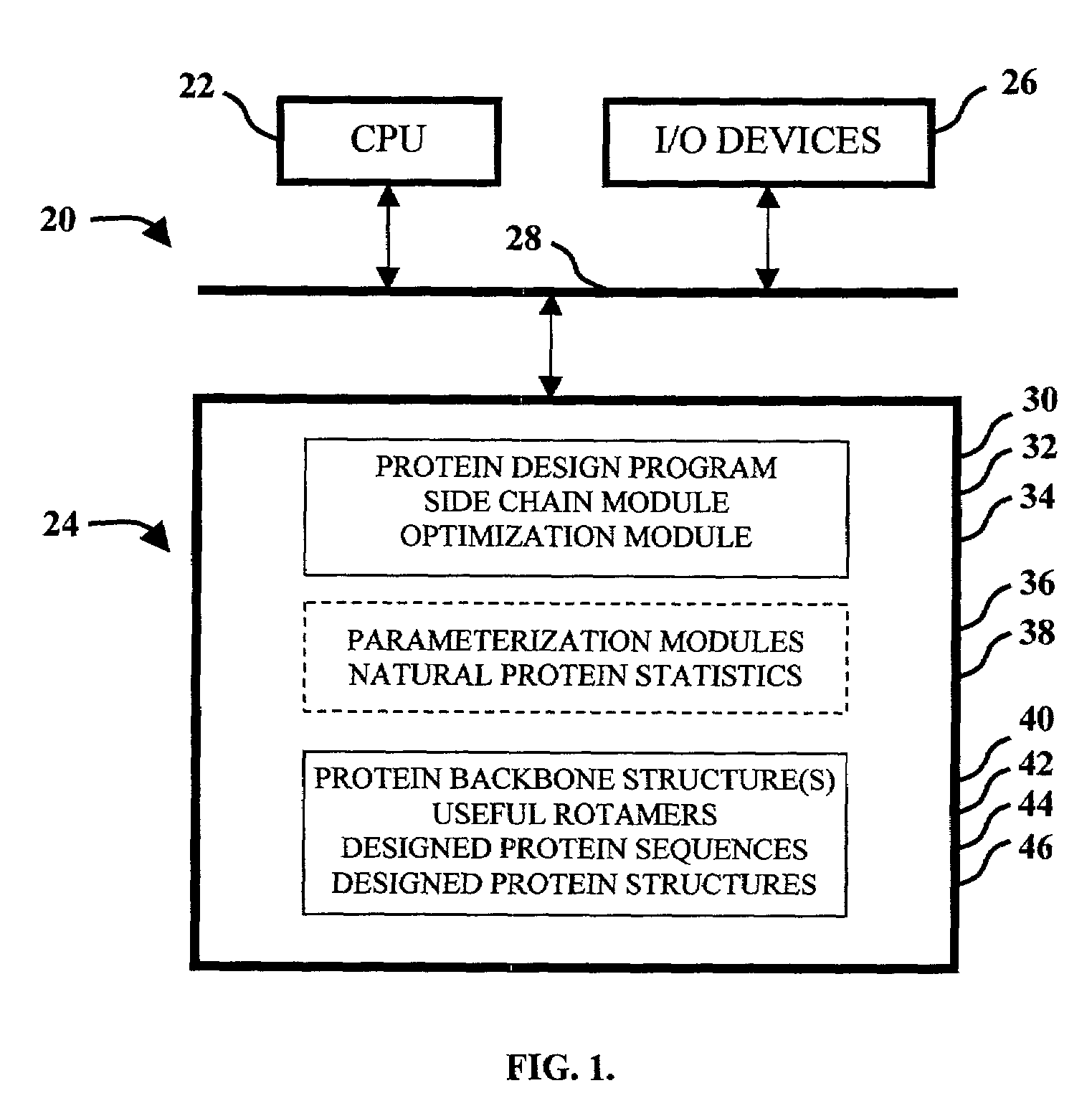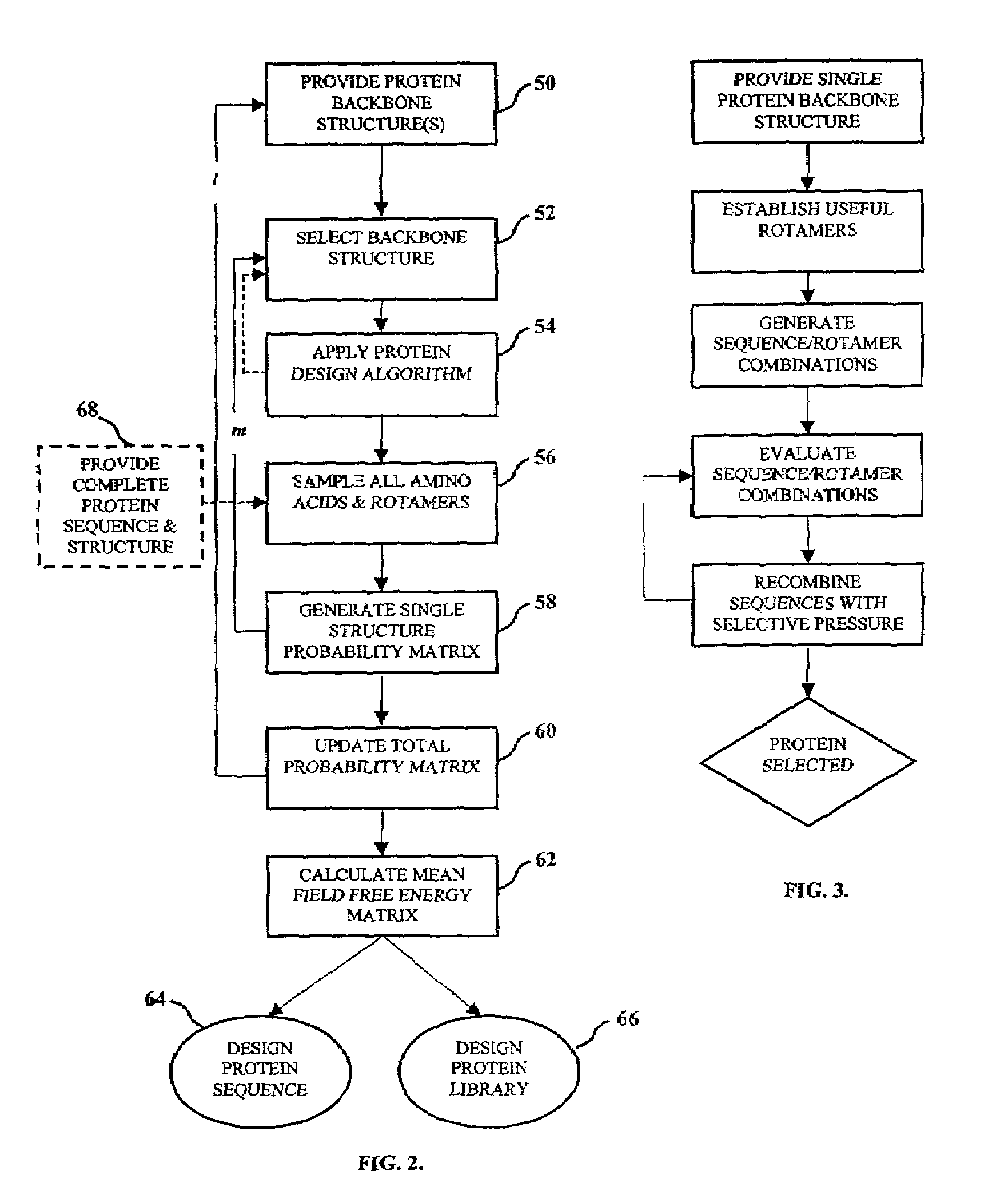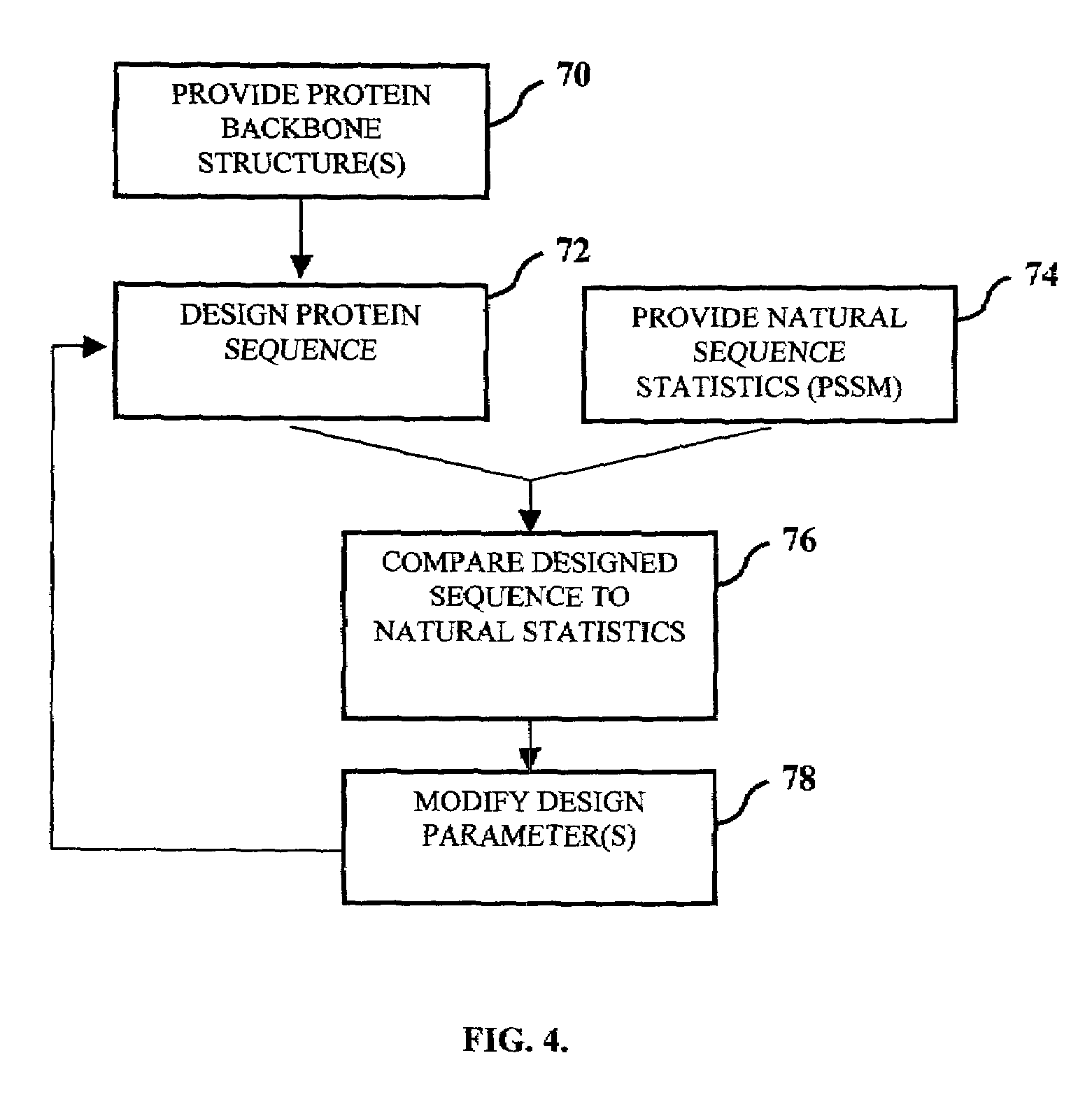Apparatus and method for designing proteins and protein libraries
a protein and design method technology, applied in the field of apparatus and method for quantitative protein design and optimization, can solve the problems of limited scope, lack of generally applicable method for incorporating backbone flexibility into the design simulation, and inability to provide a comprehensive measure of sequence spa
- Summary
- Abstract
- Description
- Claims
- Application Information
AI Technical Summary
Benefits of technology
Problems solved by technology
Method used
Image
Examples
example 1
Protein Design Using Ensemble Averaging and Mean Field Free Energies
[0078]The most direct application of the invention is the design of a single protein sequence with the goal that the sequence, when produced experimentally, spontaneously adopts the target three-dimensional structure. To illustrate this process, the small protein motif typical of proteins in the WW family of protein domains was taken as a target structure.
[0079]In a preferred embodiment of the invention, the ensemble-averaging / mean field method utilizes a set of structurally similar protein backbones as input for the design process. In this manner, the degrees of freedom that are physically expected of a backbone can be taken into account directly. Furthermore, the extent of flexibility allowed in such a backbone can be explored to generate different results. In the present example, the ensemble of backbones was generated by a Monte Carlo procedure. Beginning with a single backbone structure taken from published coo...
example 2
Designing Combinatorial Libraries of Proteins
[0086]An important extension of protein design algorithms is their use to guide the rational design and construction of combinatorial libraries. Such libraries can be produced genetically in the laboratory, then screened or selected for desired properties as previously described herein. Desired properties can include, but are not limited to, enhanced catalytic activity, improved stability, altered specificity, and enhanced activity / stability under extreme conditions. Alternatively in certain circumstances, it may be desired to remove or attenuate a selected protein function (i.e., enzymatic activity etc.) which can be effected by appropriate protein design as described herein. Combinatorial libraries and the molecular diversity they represent are of extreme importance in the biotechnology arena. However, their use has not been explored in depth, so an ability to control the extent and type of diversity encoded by a library is paramount to...
PUM
| Property | Measurement | Unit |
|---|---|---|
| Fraction | aaaaa | aaaaa |
| Angle | aaaaa | aaaaa |
| Angle | aaaaa | aaaaa |
Abstract
Description
Claims
Application Information
 Login to View More
Login to View More - R&D
- Intellectual Property
- Life Sciences
- Materials
- Tech Scout
- Unparalleled Data Quality
- Higher Quality Content
- 60% Fewer Hallucinations
Browse by: Latest US Patents, China's latest patents, Technical Efficacy Thesaurus, Application Domain, Technology Topic, Popular Technical Reports.
© 2025 PatSnap. All rights reserved.Legal|Privacy policy|Modern Slavery Act Transparency Statement|Sitemap|About US| Contact US: help@patsnap.com



